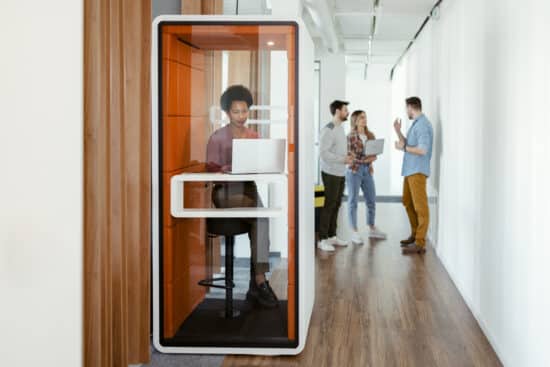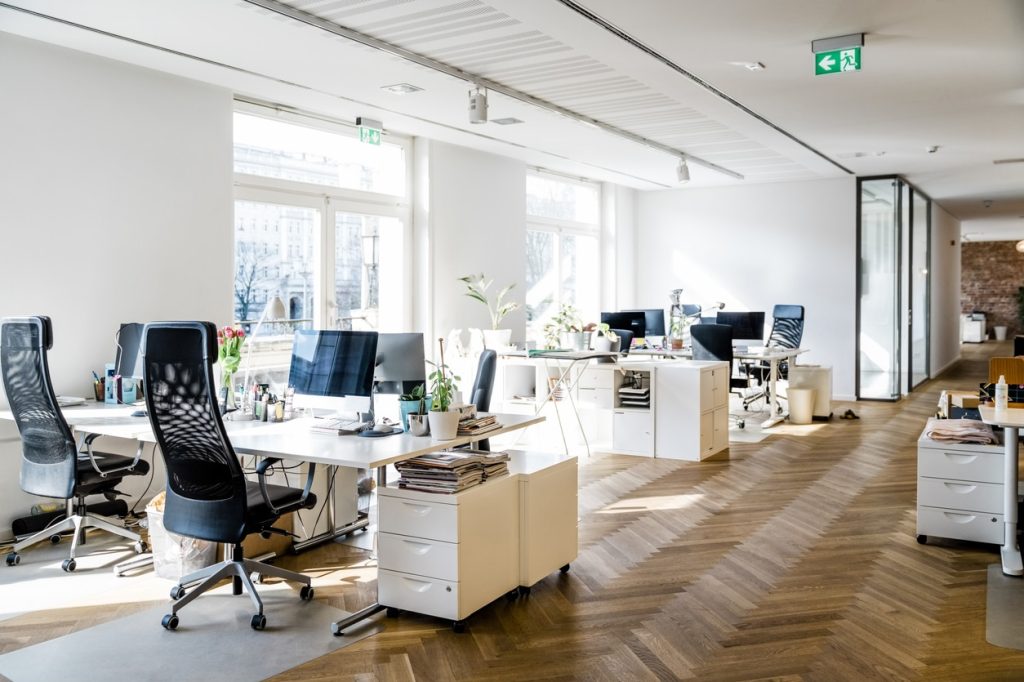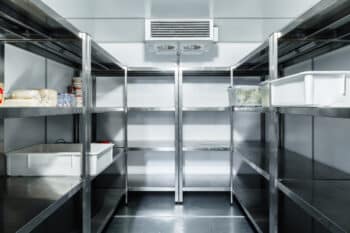In recent years, the concept of open-plan workspaces has gained significant popularity in both lab and office settings. This style of layout is designed to foster collaboration and creativity, but do they truly make a significant difference when compared with more traditional office layouts?
In this blog post, we will explore the pros and cons of open-plan workspaces in different environments, while also directing you to quality product pages and relevant blog posts to help you make informed decisions about your workspace furniture.
Pros & Cons of Open-plan Workspaces
As with any business decision, there are positives and negatives with deciding to make your workspace open-plan. These range from small considerations, such as the aesthetic of the space to major issues such as the potential for open-plan workspaces to be detrimental to the quality of work that your employees can produce. Below we’ve laid out some things to consider before making your decision.
The Benefits of Open-plan Workspaces
Enhanced Collaboration
One of the most widely talked about benefits of open-plan workspaces is the enhanced collaboration they facilitate. In both laboratories and offices, the removal of physical barriers like walls and cubicles encourages a spontaneous and dynamic workplace culture that can help to cultivate original and interesting new ideas.
Space Efficiency
Although open-plan layouts can feel more spacious, they are, in fact, more space-efficient than traditional close-off offices or labs. By removing barriers such as walls or dividers, space is created that can be filled with desks or workspaces. This can be an effective way to cut costs while still maintaining an efficient and welcoming workspace.

Natural Light and Airflow
Open-plan workspaces are known for their abundance of natural light, which can have a positive impact on the well-being and productivity of employees throughout the year but is especially beneficial during winter when employees can be indoors for most of the daylight hours. As well as this, the open layout allows for greater airflow, creating a more comfortable and enjoyable working environment.
Flexibility
Another advantage of open-plan workspaces is their flexibility. The absence of fixed walls and partitions means you can easily reconfigure the layout to adapt to changing needs. This makes it a versatile option for businesses and labs that may need to accommodate different project teams or equipment setups.
The Disadvantages of Open Plan Workspaces
Noise and Distractions
As well as encouraging positive noise such as the flow of ideas and positive workplace culture, open-plan offices and labs can become noisy environments filled with ringing phones, chatter and clacking of keyboards. This can interfere with concentration levels for some individuals and in laboratories, can affect the accuracy of experiments.
Lack of Privacy
Open-plan workspaces often lack the privacy that enclosed offices or labs provide. This can be a major concern when employees or researchers require focused, uninterrupted work. Moreover, confidential conversations may be overheard in a shared workspace, which can lead to security concerns or office gossip.
Challenges for Introverts
While great for outgoing individuals, loud and public work environments can be intimidating and off-putting for introverts who tend to work better in quiet, private areas. The pressure and emphasis on collaboration can be overwhelming for such people leading to a drop in work output and workplace satisfaction. It is important to consider the make-up of your employees when deciding whether a more conversational environment will be beneficial.
Aesthetic Considerations
The aesthetics of open-plan workspaces is subjective. Some people appreciate the modern and open space, while others find them bland or lifeless. Additionally, it can be challenging to keep the office clutter-free in a shared workspace, which may affect the overall ambience and take away from the benefits of open-plan workspaces.
Navigating Open-plan Workspaces with the Right Furniture
When considering open-plan workspaces, the choice of furniture plays a crucial role in achieving a harmonious and functional environment. High-quality and well-thought-out furniture choices can help mitigate some of the disadvantages while enhancing the benefits. Here are some recommendations and where to find them:
1. Acoustic Solutions: To reduce noise and distractions, invest in acoustic panels, screens, or dividers. These can help absorb sound and create small, private zones within an open space.
2. Privacy Pods: For individuals who require a bit of peace and quiet, privacy pods or phone booths are a must-have. These enclosed spaces provide a quiet, distraction-free area for focused work. Explore our privacy pod collection for options.

3. Ergonomic Seating: As with any office space, comfortable and ergonomic seating is essential for employee wellbeing. Look for chairs that offer proper lumbar support and adjustability. Check out our blog on how to choose the correct office furniture.
4. Modular Furniture: If long-term flexibility is your priority, consider modular laboratory furniture that can be continuously reconfigured. This allows you to adapt your workspace as your needs change. Discover our modular furniture solutions for versatility.
In conclusion, open-plan workspaces have their share of benefits and drawbacks, and whether they are the way forward depends entirely on your specific needs and preferences.
By considering your business’ needs and carefully selecting the right furniture and accessories, you can tailor your open workspace to suit your unique requirements. Whether you’re managing an office or a laboratory, balancing the scales of privacy and collaboration is the key to success.





